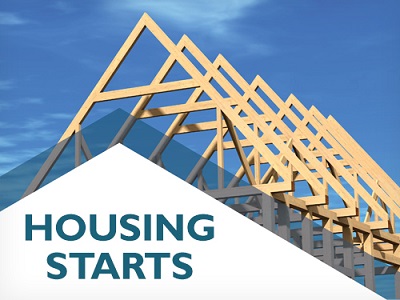 Friday, July 26, 2024
Friday, July 26, 2024  Friday, July 26, 2024
Friday, July 26, 2024 

The national trend in housing starts continued to decline in August from the historical peak that was recorded in March 2018. This moderation brings total starts closer to historical averages, largely reflecting recent declines in the trend of multi-unit starts from historically elevated levels earlier in the year.
The trend in housing starts was 214,598 units in August 2018, compared to 219,656 units in July 2018. This trend measure is a six-month moving average of the monthly seasonally adjusted annual rates (SAAR) of housing starts.
Housing starts trended lower in July 2018 as fewer projects in both the single-detached and multi-family segments got underway. The densifying cities of Vancouver, Burnaby, and North Vancouver were focal points for new multi-family construction during the month. Despite the generally weak response of housing supply to changes in prices in Vancouver, particularly large increases in home prices and strong demand from a growing population in the Vancouver Census Metropolitan Area (CMA) have resulted in an elevated level of new home construction so far in 2018, equaling levels recorded in the first seven months of 2017.
The trend for housing starts moved higher in July 2018, continuing strong construction activity in the first half of the year for the Victoria CMA. While the number of multi-family projects getting underway declined relative to the same month last year, single-detached starts expanded, particularly in the West Shore municipalities of Langford and Colwood. With strong demand for all types of housing in the region, builders have responded by starting 14% more units in 2018 compared with the same period last year.
The housing starts trend in Lethbridge CMA declined slightly in July compared to the previous month. Actual housing starts were down 19% in July compared to the corresponding period in 2017, with both single-detached and multi-family homes contributing to the decline. Elevated inventories and an easing of demand continue to assert downward pressure on housing starts in the Lethbridge area.
Total housing starts trended lower in July as fewer multi-family projects got underway in the month. Homebuilding activity during the first seven months of 2018 has been characterized by a mixed performance, with single-detached starts down by 31% and multi-family starts up by just under 1%, compared with the previous year. So far in 2018, modest economic growth has kept residential construction below the levels seen during the same period of 2017.
The total housing starts trend in the Toronto CMA was virtually unchanged in July. The decline in the single-detached starts trend was matched by rising apartment starts. High house prices continued to shift buyers from purchasing low-rise units towards relatively more affordable condominium apartments. Consequently, condominium apartment starts were the highest for the month since 2005. The majority of condominium apartment starts took place in the City of Toronto (60%), with the remainder taking place in Mississauga (19%), Vaughan (11%), and Oakville (10%).
Total housing starts trended lower in the Oshawa CMA, as both single-detached and apartment unit construction declined. In fact, July saw the lowest number of single-detached starts for the month since 1992. While demographic and economic conditions remain favourable, the number of units under construction is the highest it has been in over 25 years, which slowed the pace of new projects.
The overall trend for total housing starts in the Peterborough CMA remained relatively unchanged into July, remaining close to the high levels witnessed over the last 19 months. This strength comes off the heels of a strong year for housing starts in 2017 and robust single-detached starts in the first seven months of 2018. Demand has been driven by the relative affordability of single-detached homes compared to other Ontario CMAs.
In the Quebec region, year-to-date housing starts decreased by 10% compared to the same period in 2017. This decrease was due to the condominium and freehold (single-detached, semi-detached and row) housing segment. However, the rental housing segment continued to stand out. In fact, conventional rental or seniors’ housing units saw an increase of 48% over the same period last year.
The first seven months of 2018 has seen total housing starts increase by 8% compared to the same period last year. Construction of multi-family projects continues to drive this growth, with an increase of 13% compared to 3% in single-family housing starts. The increase in multi-family construction projects are a response to a 7-year low in New Brunswick’s apartment vacancy rates.
Keep reading on the CMHC website
Watch our video and learn more about the benefits of joining Construction Links Network – the peer-to-peer network sharing platform for the construction, building and design community.
Press Releases | Project Updates | New Appointments | Awards & Milestones | Company News | New Products/Services | Brochures | Videos | Infographics | Blog Sharing | Events and More